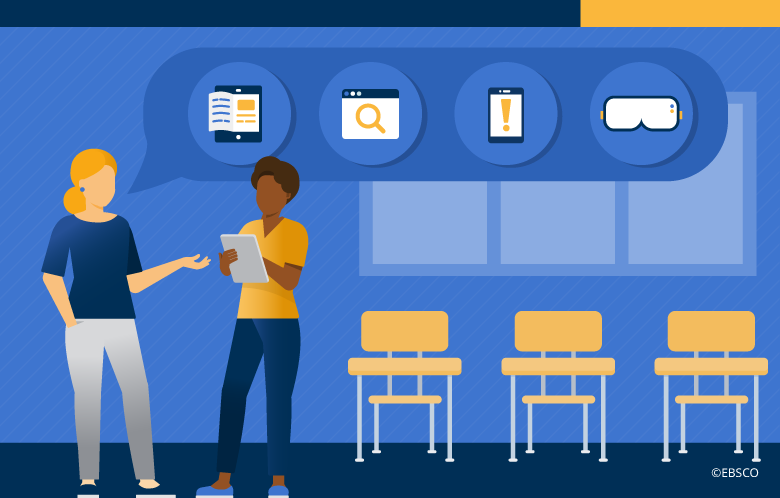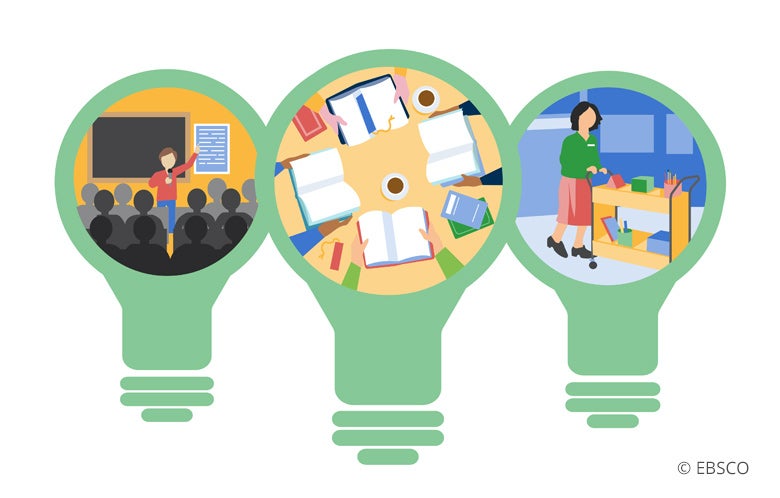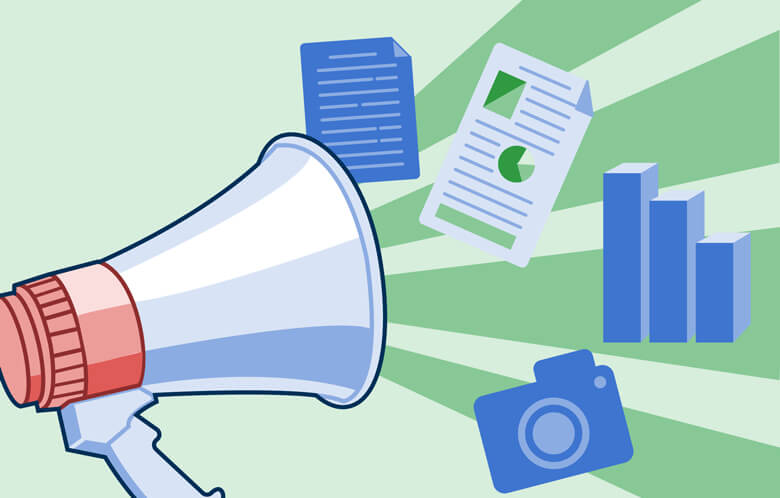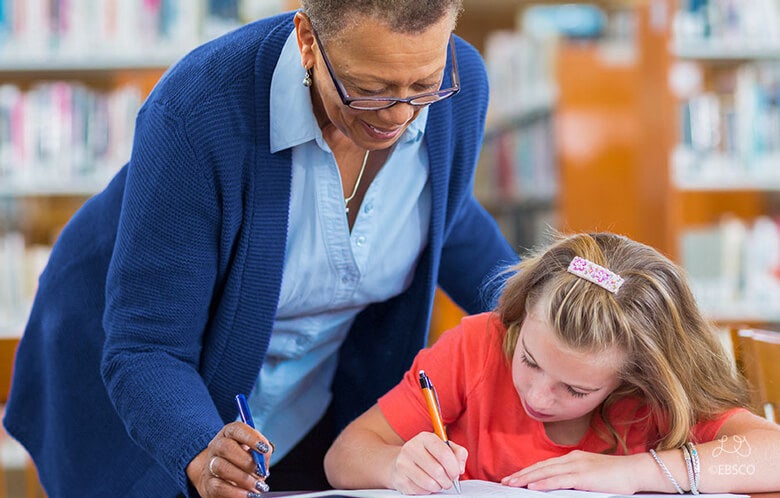Teacher-librarians support their school communities in a variety of ways. Among many other activities, they acquire materials to support evolving curricula, help learners use print and digital information resources, evaluate and curate websites and apps, deliver information literacy instruction, and provide students with welcoming “third spaces.” What some classroom teachers might not realize, however, is that co-planning lessons is also a skill in the school librarian’s professional toolbox. Just as they support student achievement, school librarians are also available to help teachers, administrators and staff meet their goals.
Collaboration is included in standards set by several professional organizations. “Collaborate” is one of the six shared foundations in the American Association of School Librarians (AASL) National School Library Standards, and ISTE (International Society for Technology in Education) includes “Collaborator” as one of their seven main standards for educators. In addition, the Future Ready Librarians framework describes collaborative leadership as essential to “a culture of innovation whereby trust fuels the capacity of students, teachers, administrators, caregivers and community to work collaboratively toward a preferred future.” Librarians can build trust and increase visibility within the school community through collaborative partnerships.
Success Through Partnerships
Research shows that partnerships between teacher-librarians and classroom teachers strengthens the quality of instruction, leads to higher levels of student skill development, and increases the likelihood that students will transfer those skills outside the walls of the school library. Teacher-librarian collaborations are successful when curriculum delivery leverages the skills and expertise of both instructors. For example, the classroom teacher brings content area knowledge to the lesson, while the librarian serves as the technology guru and database searching specialist.
Successful collaborative relationships can create teacher-librarian champions such as high school English teacher Trevor MacKenzie, who views his school librarian as a flexible partner and an invaluable resource for not only his students, but also himself. The school librarian is a sounding board who helps his underdeveloped inquiry project ideas take shape and the expert he turns to when his students need research and information literacy instruction. The teacher-librarian collaboration, MacKenzie writes, “becomes a powerful cycle of support that gains momentum and benefits the students, the teacher, and the culture of learning in the school.”
In addition to forming partnerships with teachers, librarians can find strong supporters in school administrators, many of whom believe teacher-librarians set the tone for collaboration in their learning communities. Collaboration can also include special education staff, who can advise on differentiating instruction.
However, as Michigan school librarian Kelly Hincks cautions, there is only so much that librarians can control. “You cannot make someone work with you,” she writes, “but you can be open and willing to share whenever the opportunity arises.”
Top 10 Collaboration Tips
An informal review of the literature uncovers many strategies for increasing and improving collaboration, so librarians are bound to find a few that work well for them.
Prepare
- Do your homework. Conduct an environmental scan (or SWOT analysis) of your school to identify potential scheduling, contractual, and interpersonal staff barriers as well as opportunities. This activity can reveal ways to improve collaboration. Research any new school initiatives, compile a list of lesson ideas, and collect resources to help the teachers prepare.
- Read the latest research. Flipster offers digital magazines to magazines such as School Library Journal, Information Today and Computers in Libraries. EBSCO databases — such as Academic Search Ultimate, Education Source, Library & Information Science Source and Professional Development Collection — include a variety of articles that focus on teacher and librarian collaboration. Download a bibliography.
- Look to your fellow librarians for guidance. Reach out to other school librarians in your community. If you’re a solo librarian in your district, don’t struggle in isolation! Follow library groups on social media, join a school library Listserv, or subscribe to librarian blogs. Your colleagues near and far can offer helpful advice, support and inspiration.
Advocate
- Be proactive. Familiarize yourself with the curriculum standards or objectives that teachers are responsible for teaching. Reach out to offer help with planning. Ask teachers (in a team meeting or via email) to share lesson plans or specific areas they will be working on in the coming weeks. Bring resources to the planning meeting that correspond with the lesson’s objectives.
- Market your skills. To fill up your collaboration calendar, you’ll need to take the initiative. Reach out to classroom teachers and let them know about all the ways you can help make their jobs easier. Remember to proactively answer the “What’s in it for me?” question that some teachers might ask themselves when you first propose a partnership. Need help creating infographics, newsletters and other marketing outreach pieces? LibraryAware can help.
- Lead professional development for teachers. These can be whole-day events, before- or after-school workshops, or one-hour lunch-and-learn sessions. Focus on content and how students learn content, link to curriculum standards, showcase the library’s resources and technology, and emphasize how collaboration between classroom teachers and school librarians benefits both them and their students.
Coordinate
- Be flexible. Offer to meet classroom teachers on their turf at a time that works for both of you. Be willing to meet outside of school hours.
- Start small. Work with early adopters in one class or one grade level to define what the collaboration will look like and accomplish.
- Articulate clear goals. How will the teacher-librarian collaboration impact student learning? How will instructional duties be shared? What does each party expect from the partnership? How will you know your collaboration is a success? Define the criteria for success.
Assess and Adjust
- Measure your success. After implementing your collaborative lesson, reflect on how it went. What worked? What didn’t? What would you change? Present results to school administration and teaching staff at the next faculty meeting.



